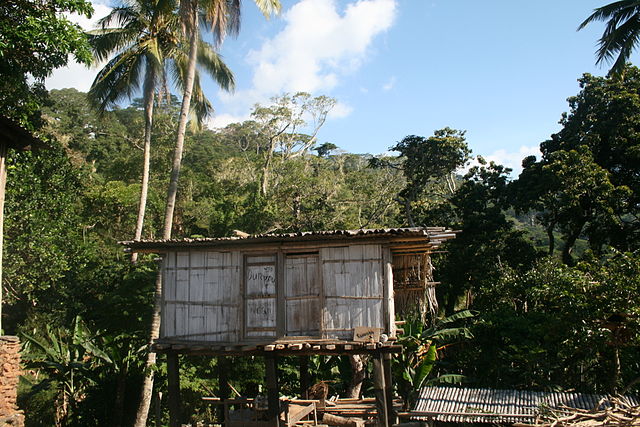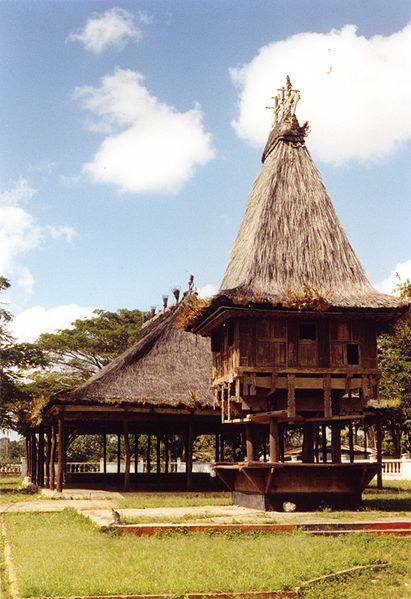
Thammasat University students who are interested in history, ASEAN studies, sociology, political science, economics, and related subjects may find a newly available book useful.
The Paradox of ASEAN Centrality: Timor-Leste Betwixt and Between is an Open Access book, available for free download at this link:
https://brill.com/display/title/60399?rskey=yJnTPi&result=3
The TU Library collection includes several books about different aspects of the political history of Timor-Leste.
As the publisher’s website explains,
ASEAN, as being on the very core of this matter, deserves close attention through the case of Timor-Leste for understanding international strategic inclusion-exclusion dynamics. The manuscript we provide tackles this case through a small country ‘in-between’ the core global actors of economic and political concern: Timor-Leste as a ground for grasping large-scale complexities in decision-making processes, as much as the micro-understanding and dynamics of a small country ‘within the game’ – if not even on the forefront.

The book’s introduction notes:
ASEAN, understood as one of the core regions of our planet, is undergoing several changes in economic, political and sociocultural terms, far beyond its borders. Bilateral and multilateral rivalries arise, through which ASEAN’s centrality seems to be ‘under threat’. As this issue is far more complex than the former economic-political discourses have seen, we understand the need to contribute to the debate on geostrategic power games from an interdisciplinary perspective. Hence, we propose to raise a set of questions: – What does globalization and its extensive influence mean for regions and centralities in geopolitical and sociocultural contexts? – How should ASEAN be looked at in an era of ponderous planetary challenges, how does it position itself in the international context and how should it be approached in order to understand its regional significance? – Are local-global relations a significant area of debate and how might this contribute to understanding regional positioning in an international setting? In a world that seems to consist of the competitive motto of ‘harder, better, faster, stronger’, we have to reconsider centralities and their interwoven dimensions from a multitude of perspectives. We understand that the subject of ASEAN, as a regional construct from 1967 responding to post-WW2 conflicts, is far from exhausted in scientific discourses when considering the crossroads of politics and international relations on one side and sociology and anthropology on the other. As there is a lack of in-depth interdisciplinary analyses on the complexity of ASEAN as one of the main global players, our aim is to contribute to understanding its relevance for the international community within a micro-macro interpretation realm through a case study: Timor-Leste on the grouping’s threshold.
Through three years of extensive research on the complex relationship between the small country and the regional grouping, we found a variety of interwoven dimensions which, as we propose, help to understand the role and positioning of ASEAN within the international context. Our research strongly reinforces the interaction between bottom-up and top-down approaches for understanding the intricacy of (regional-international) centrality in times of intense global interactions. Through this new attempt to understand ASEAN’s role (with Timor-Leste as a case study), we aim to contribute to the discourse on the compounding and intermingling of supposedly ‘fixed’ regions which ultimately need to be seen and understood as spaces beyond solid borders. Hence, this book is based on multi-sited research (qualitative fieldwork, archival research, the ethnographic exploration of the internet through netnographic approaches and document analysis) in order to primarily understand ASEAN’s centrality through the eyes of a small island state, Timor-Leste, in a continuous process of negotiating the quest for geostrategic relationships and disputing powers. Considering Timor-Leste’s longstanding (and still ongoing) attempts to gain membership of the regional grouping, our analyses focus on the greater issues prevailing: how does this process show the role of the grouping in a global context, what greater power dynamics are involved and how can this arena of several meaning systems be understood? Is ASEAN’s centrality a paradox? Is the case study of Timor-Leste a relevant one in order to highlight this paradox? This area will be tackled from the following points of view in this book:
1) ASEAN’s centrality as a paradox
2) The relevance of Timor-Leste as a case study
3) Timor-Leste as an epitome of the strengths and weaknesses of the region
4) The building of international regions
5) Covid-19 as a new challenge for geostrategic positioning.
This research is a result of the EU H2020 project ‘Competing Regional Integration in Southeast Asia’, which has started in July 2018. Our primary quest within this larger research framework was the dynamics behind Timor-Leste’s longstanding (and still ongoing) attempts to gain membership of ASEAN, which was officially submitted in 2011, yet unofficially dates back to 1975. In order to gather data on this complex research, we took a parallel approach to 1) ethnography on the internet, through which we analyzed online media which precisely tackles the relationship between Timor-Leste and ASEAN, and 2) fieldwork in Timor-Leste through interviews (30) with three focus groups (politicians, entrepreneurs and young academics). Through this parallel data collection, a first kick-off paper evolved, discussing the online newspaper narrative of Timor-Leste’s readiness to join the grouping. Following this, we analyzed our field data and used, first of all, a triangulation-analysis, which tackles 1) the political analysis, 2) an analysis on decision-making processes and 3) a sociological-anthropological analysis. As our process of research showed that the relationship between Timor-Leste and ASEAN was far more complex, we had the opportunity to broaden our framework and look at this issue from a broader perspective: a local-global analysis in order to understand the case of ASEAN and Timor-Leste in the area of building international regions. Finally, having arrived at 2020, the obvious relevance of a new perspective emerged: regional(/international) centrality construction and negotiation in a pandemic context. Hence, our initial question on ASEAN’s centrality turned out to need more in-depth analysis from several directions. Our work is aimed at being strongly interdisciplinary, as we come from three different, yet closely interwoven, disciplines: international relations, political science, and anthropology. Even though our work is far from exhaustive, it should contribute to filling the existing gap in scientific literature when it comes to the growing relevance of understanding our future yet to come through the building of international regions. Regarding gaps in literature, ASEAN’s centrality has previously been determined mainly through the lens of international relations and therefore its geostrategic positioning in the world context. The societal and political area has been tackled in a rather weak to absent manner, meaning that literature on this subject is very poor. In fact, the first academic paper on this topic was written by Maria Ortuoste in 2011: Timor-Leste and ASEAN: Shaping Region and State in Southeast Asia, Asian Journal of Political Science, Vol. 19, Issue 1, pp. 1–24. The second was a chapter of a book by the same author, published in The Routledge Handbook of Contemporary East Timor, edited by Andrew MacMillan and Michael Leach, “Timor-Leste and ASEAN: From Enmity to Amity, Exclusion to Semi-Inclusion”, 2019. In both cases, the author highlights the unpreparedness of Timor-Leste and the opaqueness of bureaucratic politics as well as the tyranny of the consensus decision-making process as the main reasons for the delays to admission.

(All images courtesy of Wikimedia Commons)
